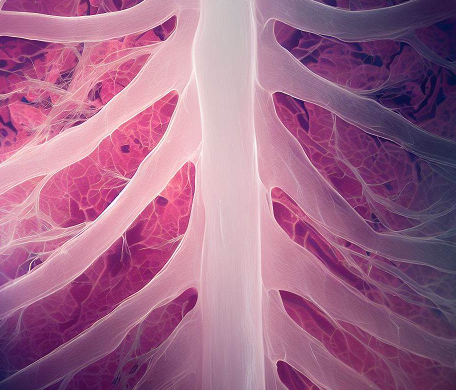Read about Biapical Pleural Parenchymal Scarring Meaning, Symptoms, Causes, Treatment.
Biapical Pleural Parenchymal Scarring Meaning
Pleural parenchymal scarring is a disorder that causes fibrous tissue to grow within the pleural cavity. The pleura is a delicate membrane that borders the chest wall and surrounds the lungs. It has two layers: the visceral pleura, which touches the lung tissue, and the parietal, which lines the chest cavity. Scarring in the pleura might cause problems. Biapical pleural parenchymal scarring is the term used to describe scarring that affects the pleura in the upper portions of both lungs.
Causes
Biapical pleural parenchymal scarring can be caused by numerous factors. e.g.
Tuberculosis
A bacterial infection called tuberculosis mainly affects the lungs. In some circumstances, it might result in the development of scar tissue in the pleural cavity, particularly the biapical region.
Occupational Exposure
Pleural scarring can be brought on by prolonged exposure to specific workplace dangers such asbestos fibers, silica dust, or beryllium.
Autoimmune Diseases
Autoimmune diseases like rheumatoid arthritis and systemic lupus erythematosus can produce pleura inflammation and scarring.
Radiation Therapy
Lung cancer and other thoracic cancer patients who undergo radiation therapy may develop pleural scarring.
Idiopathic Causes
Biapical pleural parenchymal scarring might have an unknown cause and fall under the category of idiopathic.

Symptoms
The symptoms of biapical pleural parenchymal scarring vary depending on the amount of scarring and related consequences. Typical signs might include:
- Breathing difficulty
- Chest discomfort
- Persistent cough
- Fatigue
- Decreased lung capacity
Diagnosing biapical pleural parenchymal scarring usually requires a thorough medical history, physical exam, and diagnostic tests. X-rays, CT scans, and MRIs can show the scarring and its severity.
Treatment
The treatment strategy for biapical pleural parenchymal scarring attempts to control symptoms, decrease scarring progression, and address underlying causes. The following therapeutic options may be considered:
Medications
Depending on the etiology, antibiotics, corticosteroids, or immunosuppressive medicines may be recommended.
Pulmonary Rehabilitation
Pulmonary rehabilitation programs with exercises and breathing techniques can improve lung function and respiratory health.
Oxygen Therapy
Supplemental oxygen therapy may be advised in severe cases where the oxygen levels are severely low.
Surgical Interventions
In some cases, surgical procedures like decortication (the removal of scar tissue) or pleurodesis (the fusing of the pleural layers) may be required.
Prevention
Preventive therapies and lifestyle changes can lower the risk or decrease the advancement of biapical pleural parenchymal scarring. Here are some suggestions:
Avoid Occupational Hazards
Utilize safety precautions and protective gear if you're working in a setting where exposure to hazardous substances is possible.
Quit Smoking
Smoking harms the lungs and raises the possibility of respiratory diseases. Lung health can improve as a result of quitting smoking.
Practice Good Hygiene
Pleural scarring brought on by tuberculosis can be prevented by practicing good hygiene and avoiding close contact with those who are affected by it.
Follow Medical Advice
Follow the treatment plan for autoimmune diseases and get regular lung checks.








0 Comments